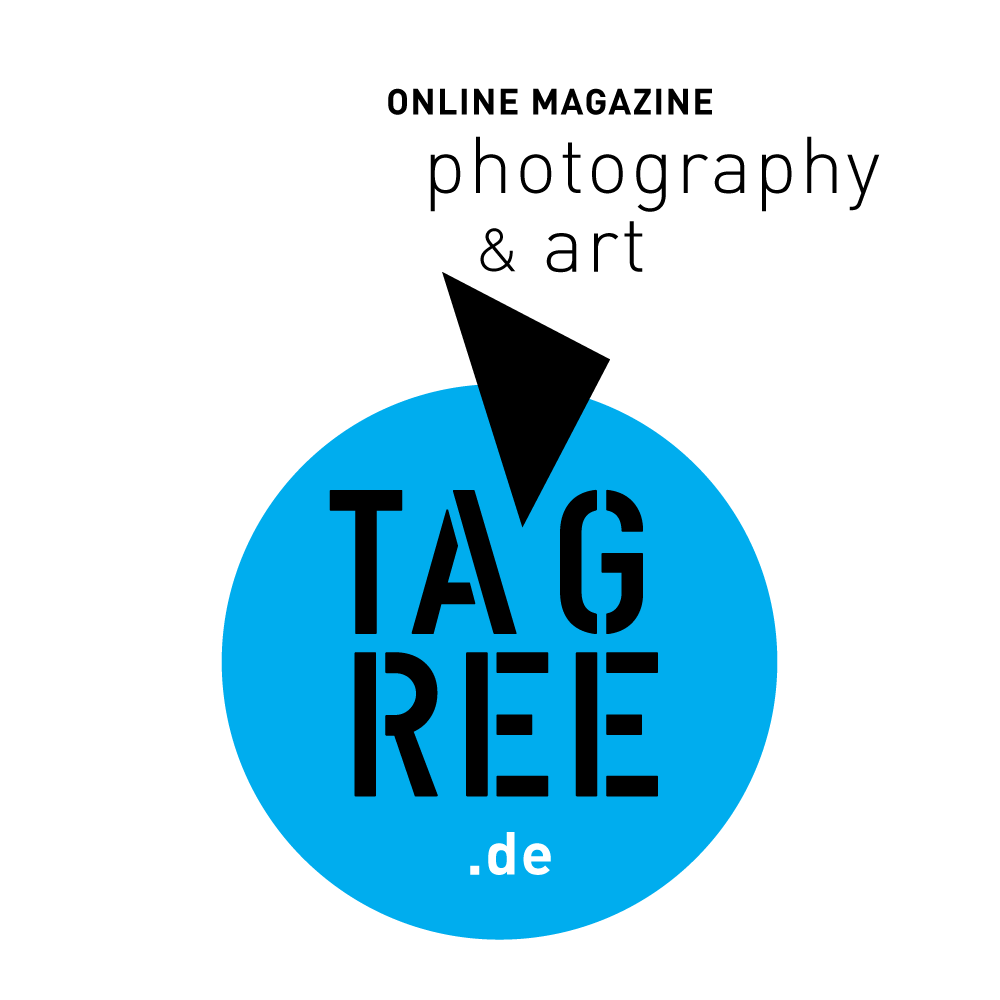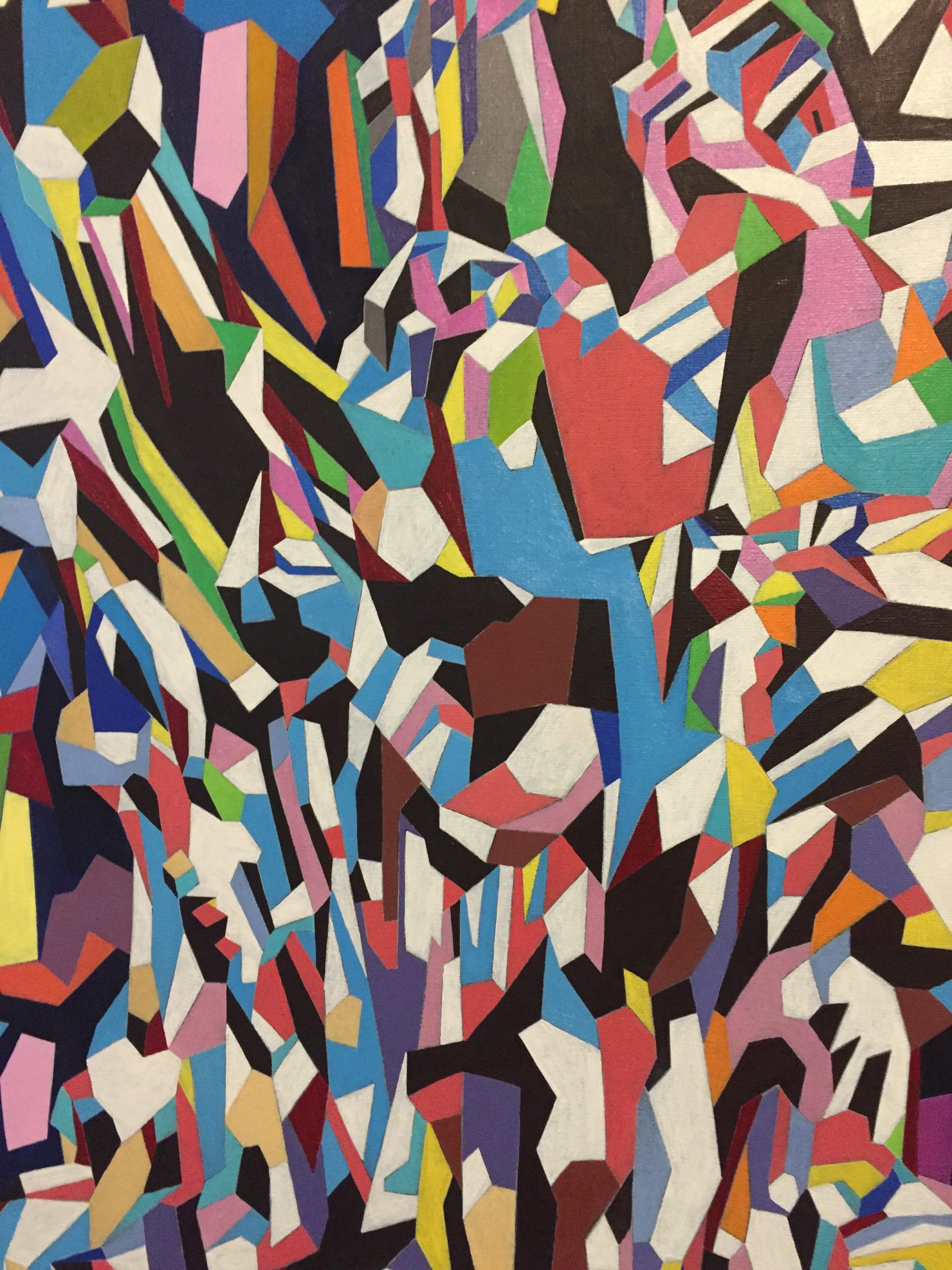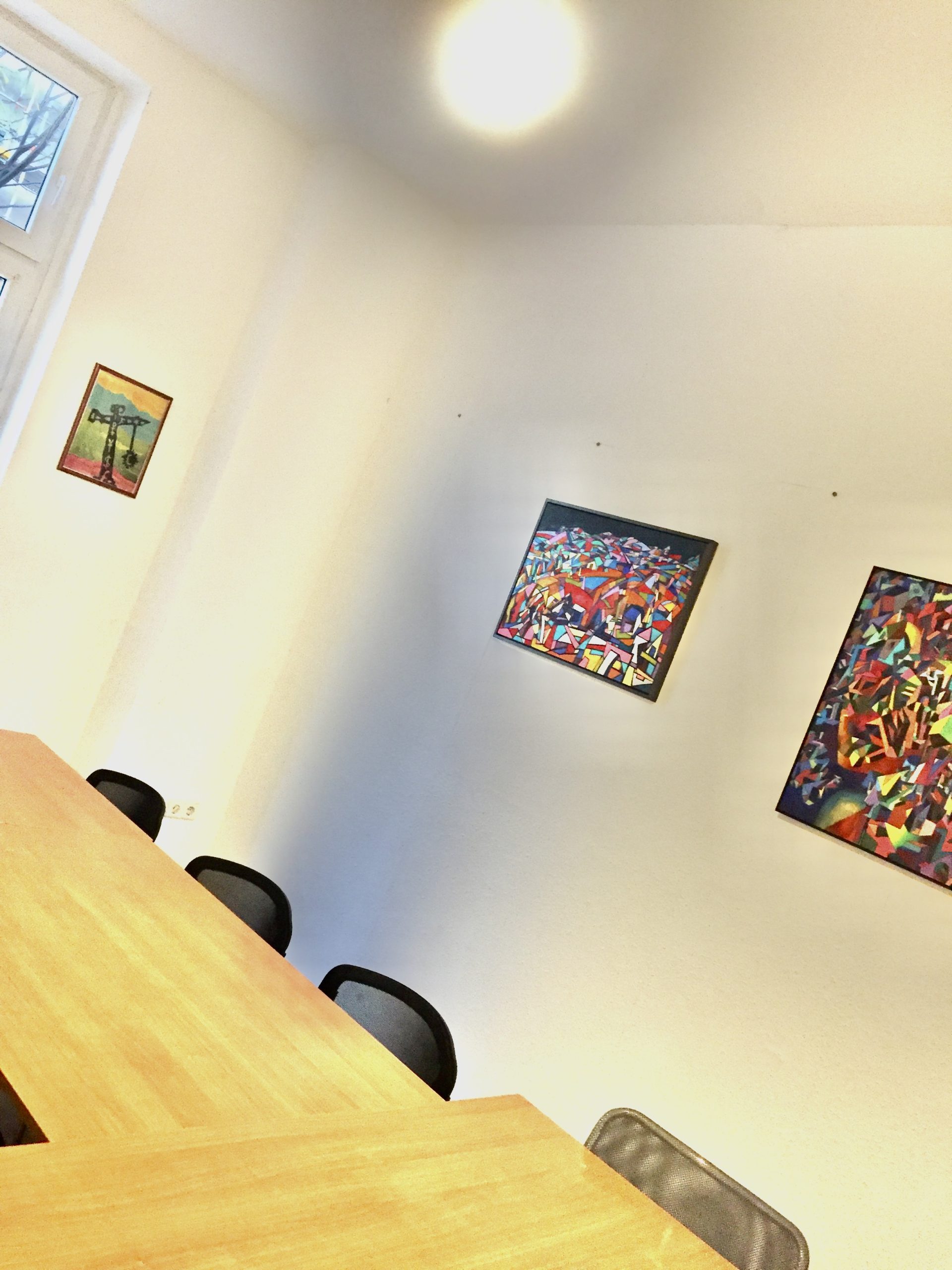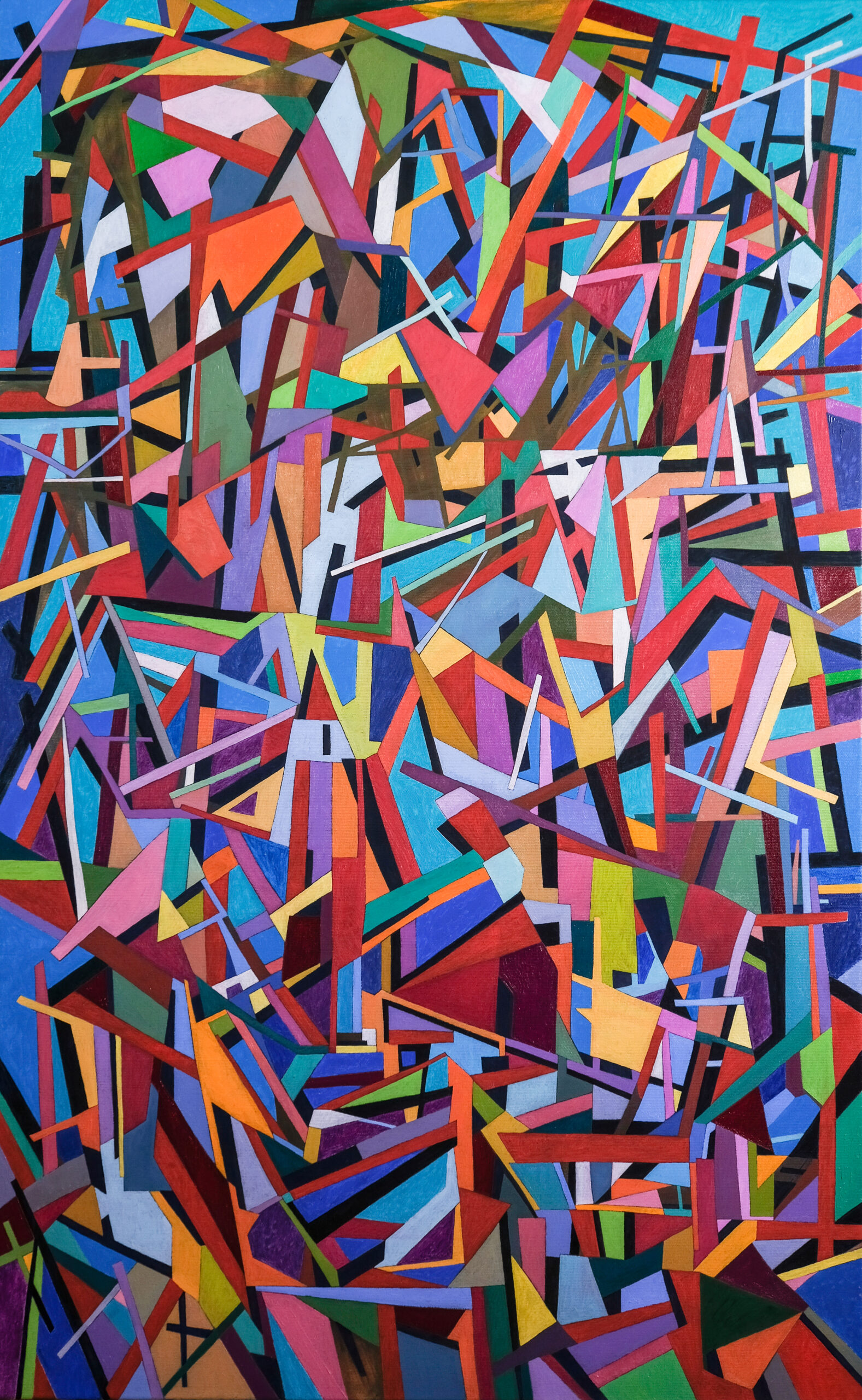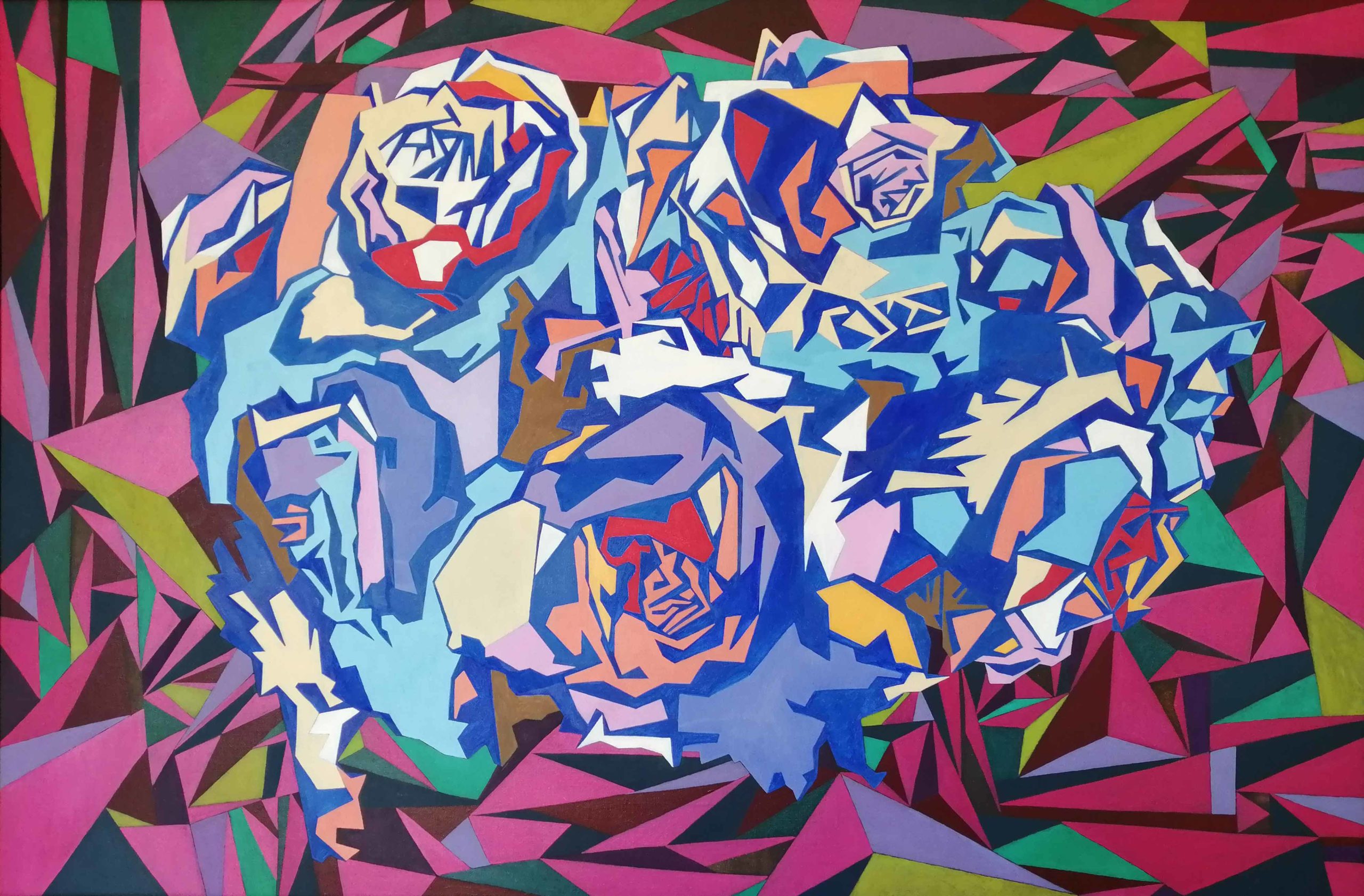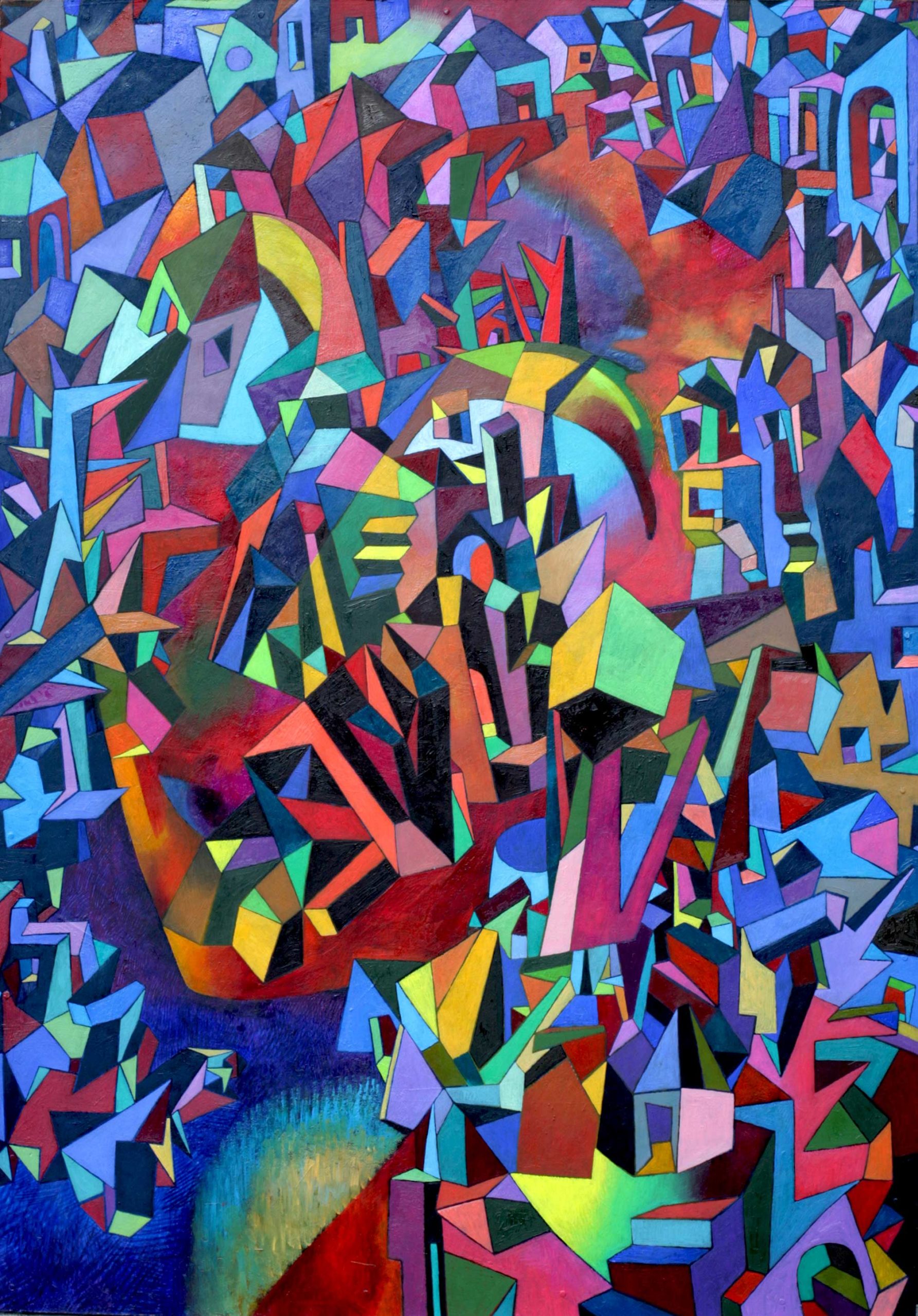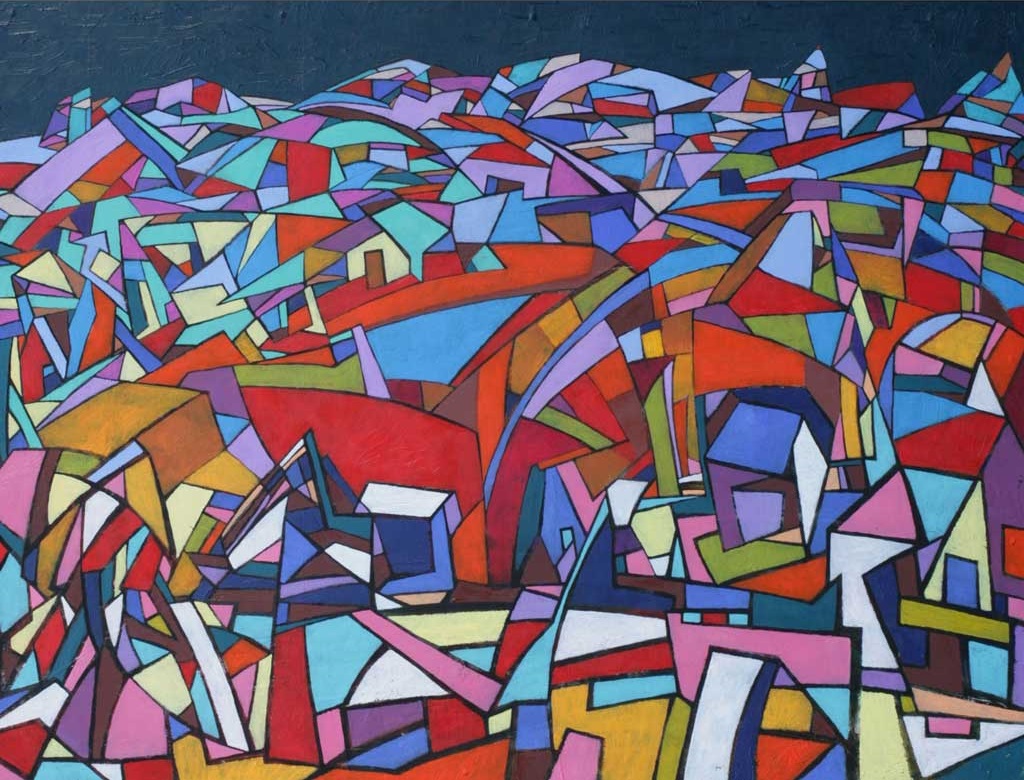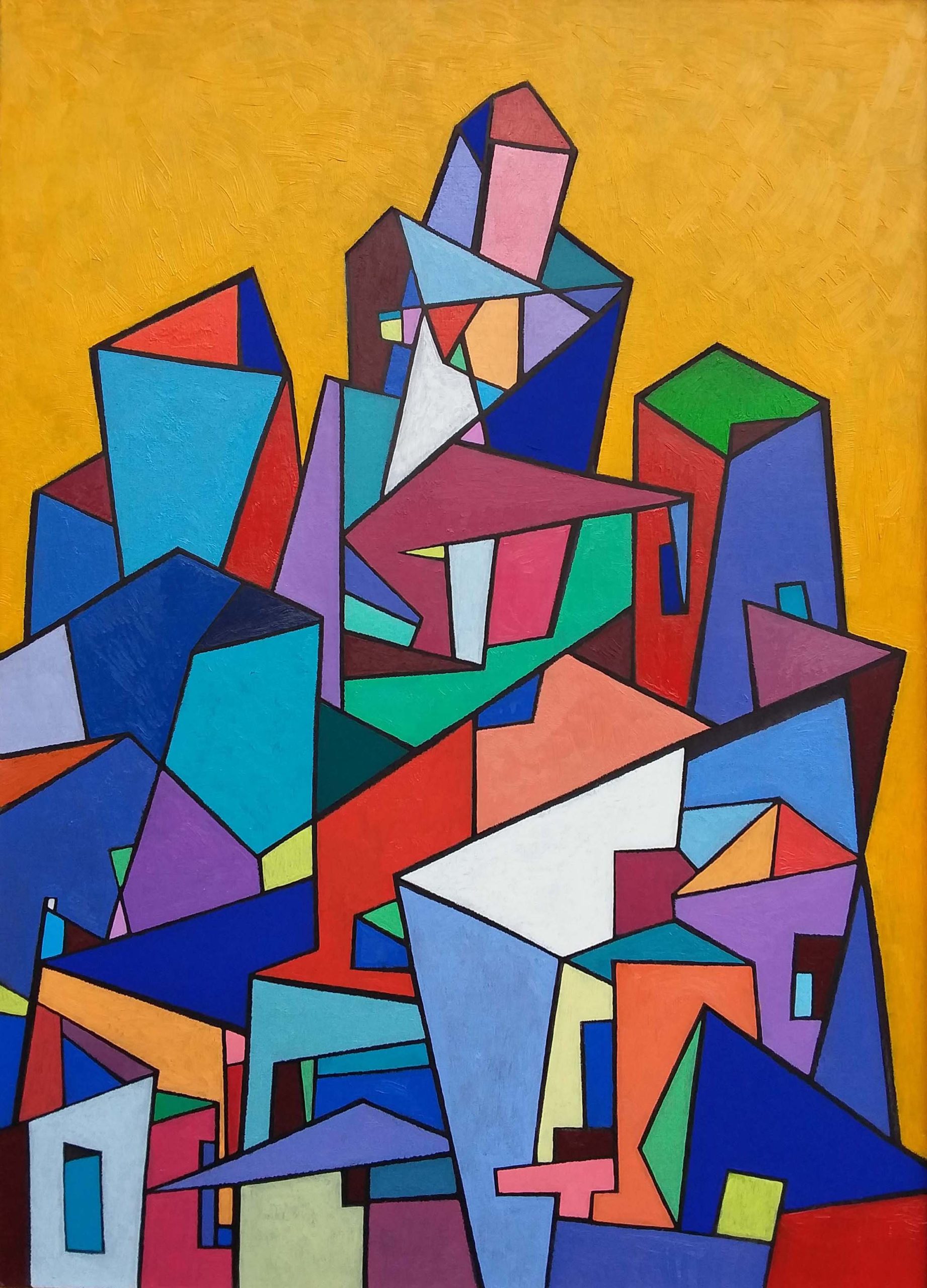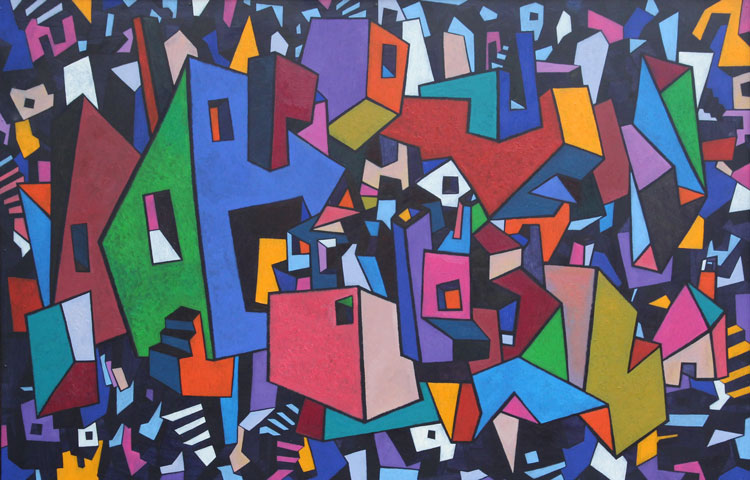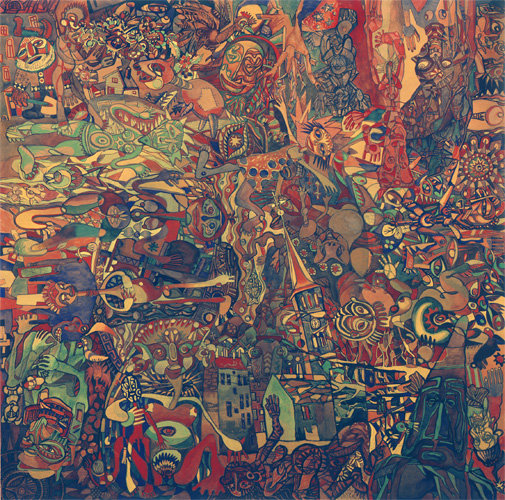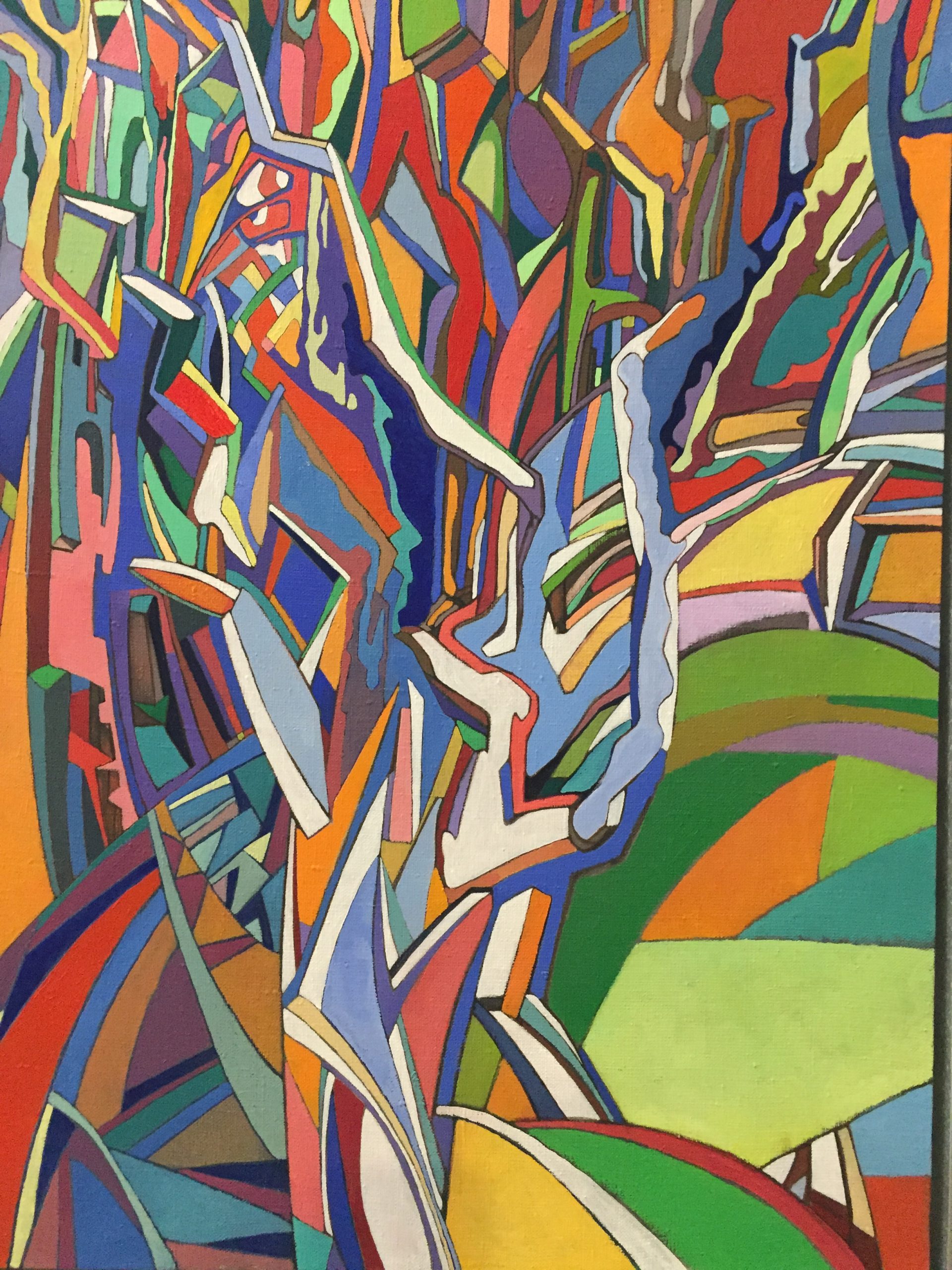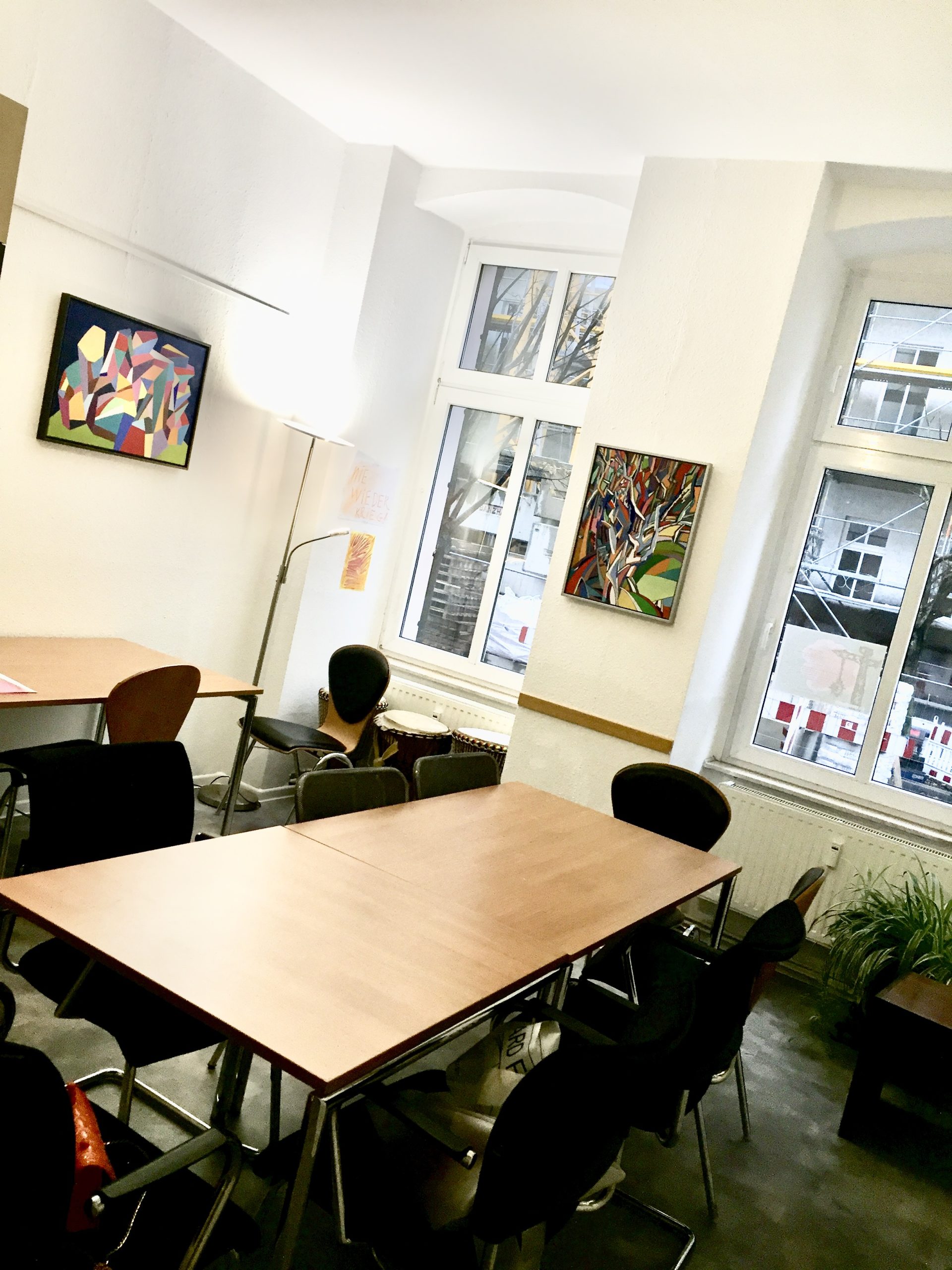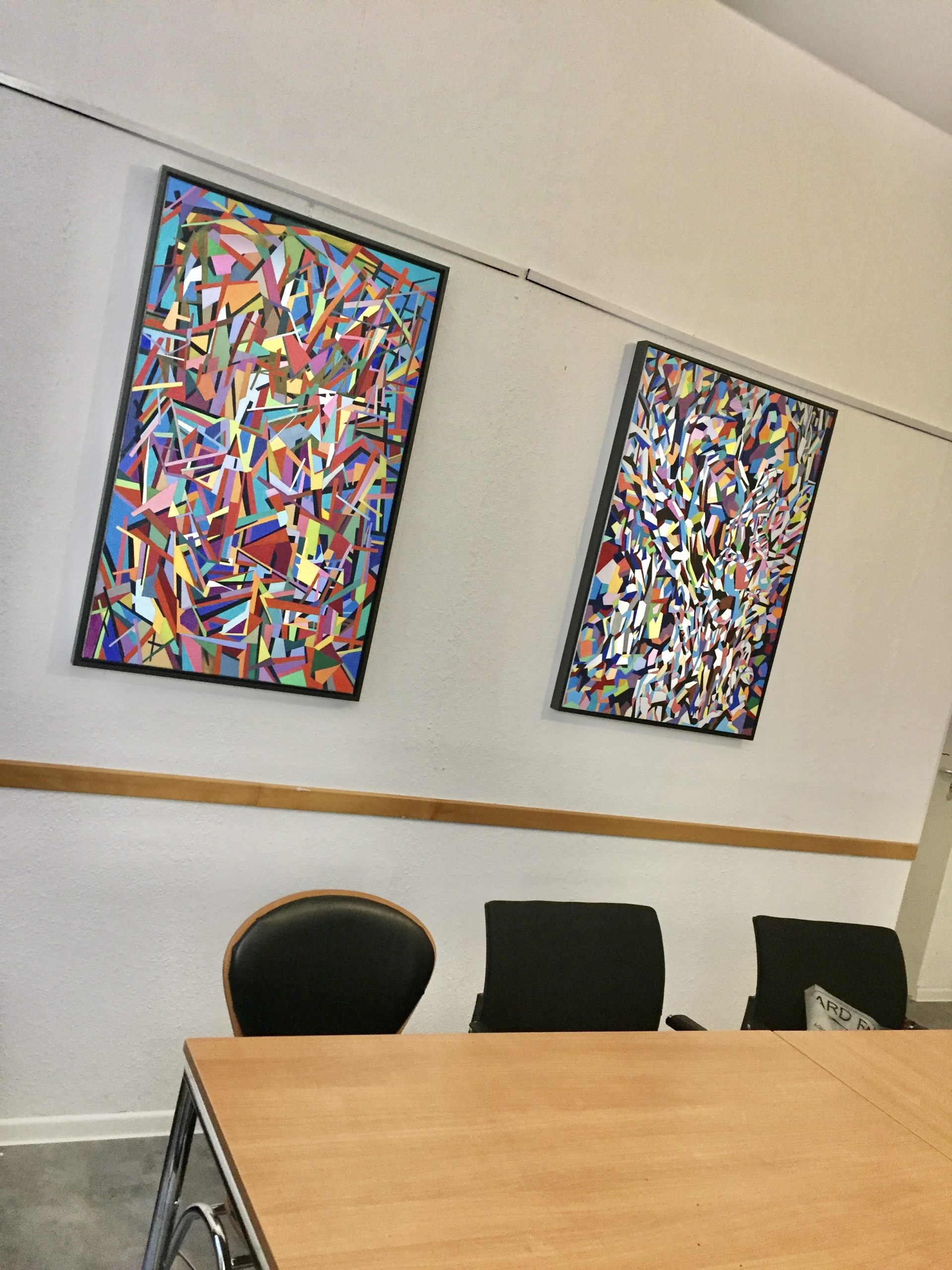Brightly colored abstract paintings with geometric motifs against dark or black backgrounds are a striking and visually captivating form of abstract art. These works often feature bold, contrasting colors that create a sense of dynamism and energy, while the use of geometric shapes adds a structured, mathematical quality to the composition.
One of the defining features of these abstract paintings is their non-representational nature. Unlike figurative paintings that depict recognizable objects or scenes, these works exist purely as visual expressions of color, shape, and form. This non-representational quality allows the viewer to engage with the painting on a purely aesthetic level, without the distraction of trying to identify or interpret specific objects.
Despite their non-representational nature, these paintings are often rich in composition, with intricate patterns and shapes that create a sense of movement and depth. The use of bright colors against a dark background creates a sense of contrast and tension, drawing the viewer’s eye to the central motifs of the painting.
These abstract paintings continue the tradition of abstract art, which began in the early 20th century with artists like Wassily Kandinsky and Kazimir Malevich. Abstract art was a reaction against the representational art that had dominated Western art for centuries, and it sought to explore the possibilities of color, form, and composition in their own right.
Brightly colored abstract paintings with geometric motifs against dark or black backgrounds are a continuation of this tradition, pushing the boundaries of what abstract art can achieve. They are a celebration of color, form, and composition, and they invite the viewer to engage with them on a purely visual level, experiencing the joy and energy of pure abstraction.
